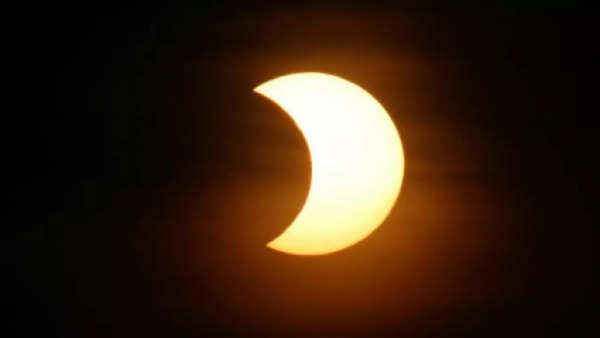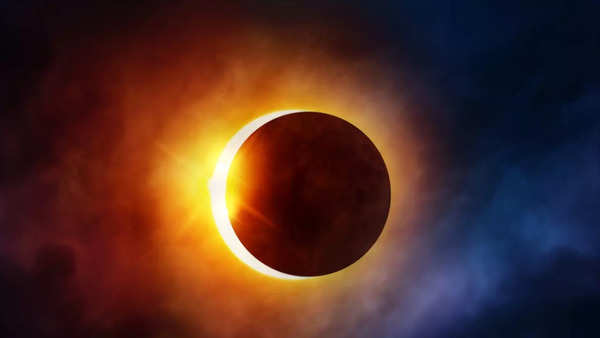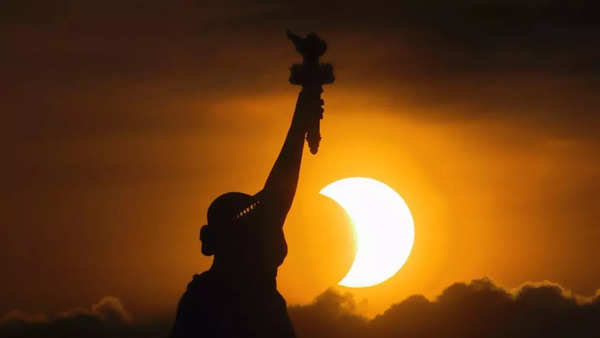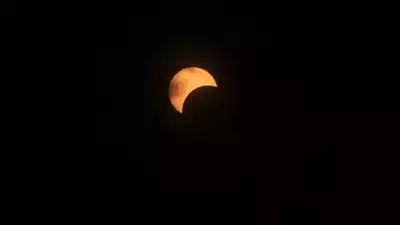Trending
Solar eclipse 2025 to be visible in North America; When and where can you see the celestial wonder
Skygazers in the western Northern Hemisphere can witness a partial solar eclipse on March 29, 2025. The celestial event will be visible in various parts of North America, Europe, Asia, and Africa. The eclipse will peak at 6:47 a.m. EDT. This event is a follow-up to the 'ring of fire' eclipse in October 2024.
March, this year, is turning out to be a month of astronomical marvels!
Skygazers have already been treated to the blood moon and northern lights. Now, as the month is set to wrap up in a few days, there is one more celestial wonder to witness - it’s the solar eclipse. Skywatchers across the western Northern Hemisphere will see at least a partial solar eclipse on March 29, 2025.
Although it won't be as spectacular as North America's April 2024 total solar eclipse, the first solar eclipse since the "ring of fire" eclipse in October 2024 is set to bring stunning views to some lucky eclipse chasers.
What is a solar eclipse?
A solar eclipse occurs when the moon passes between the sun and Earth, blocking the sun's light and casting a shadow on Earth, either partially or completely. For a solar eclipse to happen, the Sun, Moon, and Earth must be aligned in a straight line, with the Moon positioned between the Sun and Earth.

What is a partial solar eclipse?
A partial solar eclipse occurs when the Moon passes between the Earth and the Sun but doesn't completely block the Sun's light, casting a shadow on us without fully blocking out the Sun. During this time, the Sun appears to have a crescent shape.
According to Exploratorium, a partial solar eclipse is slated to occur later this month, offering an eccentric astronomical experience that typically only happens twice a year. So, this year, skywatchers will have a chance to see two partial solar eclipses, including the one in March.

When is the partial solar eclipse in March?
The first partial solar eclipse of 2025 will occur on March 29, starting at around 4:50 a.m. EDT, according to timeanddate.com. It's expected to end just before 8:43 a.m. EDT and peak around 6:47 a.m. EDT.
As per NASA, the second partial solar eclipse of the year is slated for September 21, 2025, covering parts of Australia, Antarctica, the Pacific Ocean, and the Atlantic Ocean.

When and where will the March 2025 partial solar eclipse be visible?
According to NASA, the partial solar eclipse on March 29 will be visible over parts of Europe, Asia, Africa, North America, South America, and the Atlantic and Arctic Oceans.
According to timeanddate.com, areas primarily in the Northeast U.S. could have a chance at seeing the partial solar eclipse, including New York, Boston, and Augusta, Maine.
This partial solar eclipse will have a long and broad path, rising in extreme eastern North America and setting in Siberia, Russia. At least a slight partial solar eclipse will be visible from northeast North America, Greenland, Western Europe, northwest and north central Russia, northwest Africa, the Atlantic Ocean, and the Arctic.
As per a report by USA Today, the following regions will have the most striking perspectives:
New York – 6:35 a.m. to 7:12 a.m.
Massachusetts – 6:27 a.m. to 7:08 a.m.
Maine – 6:13 a.m. to 7:17 a.m.
Pennsylvania – 6:46 a.m. to 7:08 a.m.
New Jersey – 6:43 a.m. to 7:06 a.m.
Virginia – 6:50 a.m. to 7:03 a.m.
The solar eclipse of 2025 will also be visible across Connecticut, Delaware, Maryland, Rhode Island, New Hampshire, Vermont, West Virginia, and the District of Columbia, although visibility will vary based on location and atmospheric conditions.
However, South America, Asia, almost all of Africa, Australia, New Zealand, the Pacific Ocean, and most of North America will miss out on the celestial wonder.
Solar eclipses occur when the Sun, Moon, and Earth align, either completely or partially, creating a rare and fascinating celestial event. A solar eclipse specifically happens when the Moon moves between the Sun and Earth, casting a shadow that partially or fully blocks sunlight in certain regions. Since the Moon's orbit is slightly tilted relative to Earth's, eclipses don’t happen frequently. These alignments occur during eclipse seasons, which take place twice a year.
Solar horns, a unique phenomenon where the cusps of an eclipsed crescent sun appear as two distinct points above the horizon during sunrise, will be visible from southeastern Quebec and southwest New Brunswick in Canada and in northern Maine in the US.
End of Article
FOLLOW US ON SOCIAL MEDIA
Visual Stories
Tired of too many ads?go ad free now










